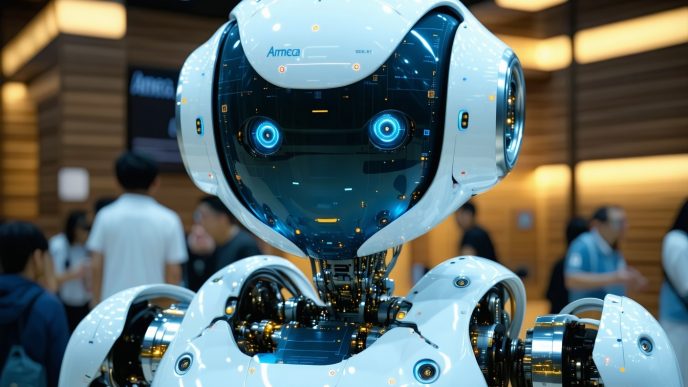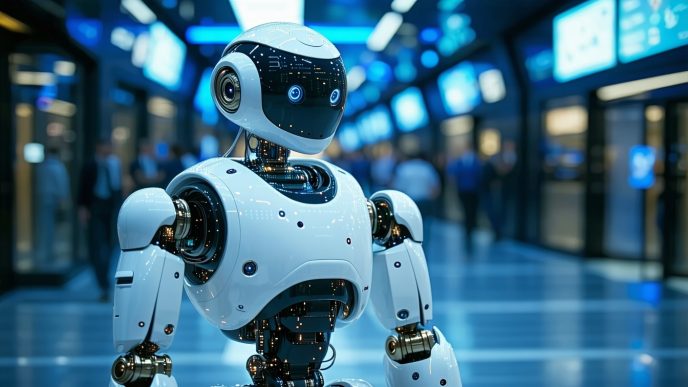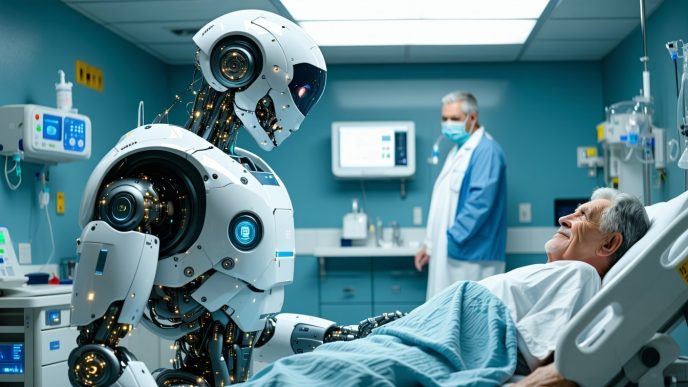Powering Personal Robots
Understanding how to power personal robots is essential for their effective operation and longevity. As humanoid robots become more integrated into daily life, knowing the various charging systems can enhance their usability and performance.
Importance of Understanding Charging Systems
Humanoid robot charging systems play a critical role in ensuring that these machines operate efficiently. A well-designed charging system can minimize downtime and extend the life of the robot’s battery. Knowledge of these systems allows users to make informed choices about maintenance and usage.
Users can optimize the performance of their robots by understanding how different charging methods affect battery health and overall functionality. Maintaining power levels is crucial, especially for tasks that require extended energy use, such as navigating environments or performing complex actions. For instance, robots like the Tesla Optimus and the Sanctuary AI Phoenix rely on efficient charging methods to perform their tasks reliably.
Different Methods of Powering Personal Robots
There are multiple methods for powering personal robots, each with its own set of advantages and disadvantages. Below is a comparison of various charging systems.
| Charging Method | Description | Advantages | Limitations |
|---|---|---|---|
| Wired Charging | Direct connection to a power source | Fast recharging times | Limited mobility during charging |
| Wireless Charging | Uses electromagnetic fields for power transfer | Convenient, no cables needed | Slower charging speeds |
| Docking Stations | Robots return to stations to recharge | Automated charging and storage | Requires proper docking alignment |
| Solar Power | Utilizes solar panels for energy | Environmentally friendly, renewable | Dependent on sunlight conditions |
| Hybrid Systems | Combines several charging methods | Flexible and adaptable | Complexity in implementation |
The choice of charging systems affects not only the convenience of use but also how long a robot can function before requiring a recharge. Each method has specific requirements and considerations, making it essential for users to evaluate their needs based on the operational demands of their humanoid robots, such as those used for education, companionship, or daily chores found in our articles on humanoid robots for education and humanoid robots for daily chores.
By understanding these systems thoroughly, users can maximize the efficiency and effectiveness of their humanoid robots.
Battery Systems
Overview of Battery-Powered Robots
Battery-powered robots are becoming increasingly prevalent in various sectors, including healthcare, home assistance, and entertainment. These robots utilize rechargeable batteries that provide the necessary energy for their operations. Efficiency and battery life are crucial considerations since they influence how effectively a robot can perform tasks without continuous charging.
Typically, battery-powered robots can operate autonomously for extended periods, which is vital for tasks such as cleaning or companionship. The design and reliability of battery systems significantly impact not only the robot’s performance but also its overall usability in daily environments.
Types of Batteries Used in Personal Robots
Various types of batteries are utilized in personal robots, each with unique characteristics, advantages, and limitations. Below is a table summarizing the most common battery types used:
| Battery Type | Voltage Range | Approx. Life Cycle | Advantages | Disadvantages |
|---|---|---|---|---|
| Nickel-Cadmium (NiCd) | 1.2V | 1000 cycles | Durable, performs well in low temperatures | Memory effect, less energy density |
| Nickel-Metal Hydride (NiMH) | 1.2V | 500-1000 cycles | Higher capacity than NiCd | Self-discharge, can be sensitive to temperature |
| Lithium-Ion (Li-ion) | 3.6V – 3.7V | 500-2000 cycles | High energy density, lightweight | Expensive, requires protection circuits |
| Lithium Polymer (LiPo) | 3.7V | 300-500 cycles | Flexible shapes, high discharge rates | Risk of swelling, requires specific charging methods |
Lithium-ion and lithium polymer batteries are among the most popular choices for humanoid robots due to their high energy density and lightweight properties, which are essential for mobility and efficiency. The understanding of these battery systems is vital for optimizing humanoid robot charging systems and ensuring reliable operation.
For further insights into humanoid robots, check out articles on humanoid robots for home use and explore innovative designs like the Tesla Optimus robot.
Wireless Charging
Wireless charging is an innovative method that enables humanoid robots to receive power without the need for physical connectors. This technology is becoming increasingly popular in the realm of humanoid robots due to its convenience and efficiency.
How Wireless Charging Works
Wireless charging utilizes electromagnetic fields to transfer energy between a charging pad and a receiving device, such as a humanoid robot. The operation typically involves two main components: the transmitter and the receiver.
- Transmitter: The charging pad or station generates an electromagnetic field when plugged into a power source.
- Receiver: The robot is equipped with a corresponding receiver coil, which captures the electromagnetic energy and converts it into direct current (DC) to charge its internal battery.
This process allows the robot to recharge simply by being placed on or near the charging pad, eliminating the need for plugging and unplugging cables.
Advantages and Limitations of Wireless Charging for Robots
Wireless charging presents several advantages and limitations that should be considered when evaluating humanoid robot charging systems.
| Advantages | Limitations |
|---|---|
| Eliminates wear and tear on charging ports | Generally slower charging speeds compared to wired methods |
| Allows for more flexible placement of robots | Alignment issues can affect charging efficiency |
| Reduces the risk of water and dust ingress in connections | May require specialized equipment for optimal efficiency |
| Enhances user experience and convenience | Higher initial cost for implementation |
The benefits of wireless charging are significant, particularly in terms of ease of use and reducing maintenance issues associated with physical connectors. However, users should also be aware of the potential challenges, especially regarding charging speed and alignment.
Understanding these factors can help robotics developers and users choose the most appropriate charging systems for their humanoid robots, ensuring efficient power management and extending operational time. For additional insights into robot energy solutions, refer to articles on robotics unlimited zeus and humanoid robots in healthcare.
Docking Stations
Role of Docking Stations in Robot Charging
Docking stations play a crucial role in the effective functioning of humanoid robots. These stations serve as the primary charging hub, where robots can autonomously return to replenish their power supply when not in use. This automation is particularly beneficial for maintaining the operational readiness of robots, ensuring they are powered up and available for tasks at a moment’s notice.
Moreover, docking stations can assist in several additional functions beyond simple charging. They often facilitate software updates, data uploads, and diagnostics, allowing the robots to operate at optimal efficiency. By having a dedicated charging station, humanoid robots can maximize their uptime and enhance their utility in various applications, such as home assistance or safety monitoring.
Features of Docking Stations for Personal Robots
Docking stations come equipped with several features designed to improve their functionality and user experience. Below are some of the common characteristics found in docking stations for humanoid robots:
| Feature | Description |
|---|---|
| Automatic Positioning | Many docking stations have sensors that enable robots to align themselves accurately for charging without human intervention. |
| Fast Charging Capability | Advanced stations can provide rapid charging, minimizing downtime and ensuring that the robot can resume tasks quickly. |
| Multi-Device Support | Some docking stations can charge multiple robots simultaneously, useful in environments with several units. |
| Connectivity | Docking stations may include Wi-Fi or Bluetooth capabilities, enabling them to communicate with robots for updates and data exchange. |
| Durability | Designed to withstand daily wear, docking stations often have robust designs and materials that ensure longevity. |
Adopting docking stations enhances the charging experience and overall efficiency of humanoid robots. Their integration into a robot’s ecosystem is essential for maximizing performance while reducing energy-related interruptions. For further details on humanoid robots and their applications, readers may refer to articles on humanoid robots for home use and humanoid robots in logistics.
Solar Power
Utilizing solar energy as a charging method for humanoid robots presents an innovative solution to powering these advanced machines. This clean, renewable source of energy can provide an efficient way to sustain robotic functions without relying on traditional power sources.
Utilizing Solar Power for Robot Charging
Humanoid robots equipped with solar panels can harness sunlight to generate electricity, allowing them to operate autonomously for extended periods. The integration of solar technology into robot designs can vary significantly, depending on the robot’s intended use, size, and functionality. Solar cells can be strategically placed on the robot’s surface to maximize exposure to sunlight.
The efficiency of solar panels is often measured in watts, which indicates how much power can be generated under ideal conditions. The following table provides an overview of average power output capabilities for solar panels used in robots:
| Type of Solar Panel | Average Power Output (Watts) | Efficiency Rate (%) |
|---|---|---|
| Monocrystalline | 200-300 | 15-22 |
| Polycrystalline | 150-250 | 13-18 |
| Thin-Film | 100-150 | 10-12 |
Benefits and Challenges of Solar-Powered Robots
While solar power offers significant benefits, there are also challenges that must be considered in the development of solar-powered humanoid robots.
Benefits
- Sustainability: Solar power offers a green alternative to traditional charging methods, reducing reliance on fossil fuels.
- Cost-Effective: Over time, solar power can reduce operational costs, as sunlight is abundant and free.
- Autonomy: Robots equipped with solar panels can operate longer in outdoor settings, enhancing their functionality for outdoor tasks or deployments.
Challenges
- Dependence on Weather: Solar charging efficiency is heavily reliant on weather conditions. Cloudy or rainy days can limit power generation.
- Size and Weight: Adding solar panels increases the physical size and weight of robots, which can affect mobility and design.
- Initial Investment: While operational costs may be lower, the initial investment in solar technology can be significant, which may deter adoption.
As developments in energy efficiency and solar technology progress, solar power is likely to become a more viable option for humanoid robots. Innovative designs may feature lightweight, flexible solar materials that can be easily integrated into future robotic designs. For those interested in further exploring humanoid robot applications, see our discussions on humanoid robots for home use and the neuralink and humanoid integration.
Power Management Systems
Power management systems are essential for the efficiency and functionality of personal robots, particularly humanoid variants. Understanding these systems is crucial for ensuring that robots operate effectively and maintain optimal performance over time.
Importance of Efficient Power Management
Efficient power management is vital for several reasons. It helps to maximize battery life, reduces downtime, and improves the overall user experience. A well-designed power management system can balance the energy consumption of various components in a humanoid robot, enabling it to perform tasks without constant recharging. This is especially important in settings where humanoid robots are expected to function independently, such as in humanoid robots for home use or healthcare environments.
The benefits of efficient power management include:
- Extended battery life
- Reduced need for frequent charging
- Enhanced performance in completing tasks
- Lower operational costs over time
How Power Management Systems Work in Personal Robots
Power management systems in personal robots monitor and control the distribution of energy throughout the robot’s components. These systems typically include several key features:
- Battery Monitoring: Keeps track of the battery’s charge level and health, allowing the robot to operate within optimal limits.
- Dynamic Power Distribution: Adjusts power levels based on the robot’s current tasks and energy demands. For example, when performing complex tasks, the system may increase power to processing units while conserving energy in less critical areas.
- Energy Recovery: Some advanced systems enable energy recovery during activities like braking in movement, which can be redirected to recharge the battery.
| Feature | Function |
|---|---|
| Battery Monitoring | Tracks charge level and battery health |
| Dynamic Power Distribution | Allocates energy based on task requirements |
| Energy Recovery | Recaptures energy during specific robot functions |
By implementing effective power management systems, humanoid robots can operate more efficiently, enhancing their capabilities in various applications. Furthermore, the integration of these systems lays the groundwork for innovations in future humanoid robot charging systems, which could lead to longer-lasting and more capable machines.
For insights into how these systems relate to specific humanoid robots, readers can explore topics such as the tesla optimus robot or the sanctuary ai phoenix.
Hybrid Charging Systems
Hybrid charging systems are an innovative approach to powering humanoid robots. These systems combine multiple methods of charging, enhancing flexibility and making power management more efficient.
Combining Different Charging Methods
Humanoid robot charging systems can utilize various energy sources, such as traditional wired charging, wireless charging, solar power, or docking stations. By integrating these methods, robots can charge in different environments without being tied to a single method.
| Charging Method | Description | Advantages |
|---|---|---|
| Wired Charging | Direct connection to a power source | Fast charging, widely used |
| Wireless Charging | Uses electromagnetic fields | Convenient, no physical connections |
| Solar Power | Converts sunlight into energy | Eco-friendly, can be used outdoors |
| Docking Stations | Automated stations for recharging | Hands-free operation |
For example, a humanoid robot might primarily use wired charging during work hours for quick energy replenishment and then switch to solar power during off-hours if placed in sunlight. This hybrid approach helps ensure the robot stays operational with minimal downtime.
Maximizing Robot Uptime with Hybrid Charging
Maximizing uptime is crucial for humanoid robots, especially those performing tasks in homes or workplaces. Hybrid charging systems provide a seamless way to keep the robot powered throughout its operation.
By using hybrid technologies, it improves battery lifespan and reduces energy consumption. Robots can transition to a less energy-intensive power source when running low, keeping them active longer. This is especially beneficial for autonomous robots that need continuous operation for tasks such as caregiving or security monitoring.
Through the integration of multiple charging options, humanoid robots demonstrate increased versatility and efficiency. For instance, a robot designed for humanoid robots for home use can utilize a hybrid charging system to manage its power needs effectively, ensuring it remains functional and responsive.
Future of Robot Charging
Innovations in robot charging technologies are essential to advancing the capabilities of humanoid robots. As these robots become more integrated into daily life, understanding the future of their charging systems becomes increasingly important.
Innovations in Robot Charging Technology
Several new technologies are emerging that can improve the efficiency and convenience of humanoid robot charging systems. These innovations include advancements in battery technology, enhanced wireless charging methods, and smart docking stations.
| Technology | Description | Benefits |
|---|---|---|
| Solid-State Batteries | These batteries use a solid electrolyte instead of a liquid one. | Longer lifespan and higher energy density. |
| Improved Wireless Charging | New systems allow for faster charging with greater range. | Convenience and reduced wear on connectors. |
| Smart Docking Stations | Docking stations with sensors and AI integration for optimal charging. | Enhanced safety and efficiency in charging cycles. |
These advancements aim to increase power capacity while reducing charging times, making humanoid robots more versatile for everyday tasks, from humanoid robots for home use to humanoid robots in healthcare.
Predictions for the Future of Charging Personal Robots
As technology progresses, several trends are anticipated in the realm of humanoid robot charging systems. These may include:
-
Increased Reliance on Renewable Energy: With solar panels and energy-efficient designs, humanoid robots may increasingly utilize renewable energy sources for charging. This can reduce the reliance on traditional electricity and enhance sustainability.
-
AI-Powered Charging Management: Future robots might use artificial intelligence to analyze their charging needs based on usage patterns, optimizing their charging schedules accordingly. This can ensure that they charge during off-peak hours or when renewable energy sources are most available.
-
Enhanced Mobility and Flexibility: As robots become more mobile, charging systems may evolve to include portable charging solutions. This would allow robots to recharge quickly without needing to return to a docking station.
-
Seamless Integration with Smart Home Systems: Future charging systems may be integrated with smart home technologies, allowing users to monitor and control charging through their smartphones or smart home assistants.
These trends highlight the growing sophistication of humanoid robots and the importance of efficient charging systems to sustain their functionality. As these innovations emerge, the landscape of humanoid robotic assistance will continue to expand, providing users with more reliable and efficient options for their daily needs.














